- home
- Parrot
- General information
05/22/2019 Bright and noisy budgies gained popularity as pets in the 19th century. Since then, about 200 species have been bred, each of which differs in color and plumage pattern. With good care, these birds live up to 15 years, but this is only possible if the living conditions are carefully observed. Along with the quality of food and the design of the cage, the microclimate in which the pet lives is of considerable importance.
What climate does a parrot need?
Budgerigars were brought to Europe from Australia, so they are adapted to life in tropical and subtropical climates. Throughout the year, the temperature in their habitat remains quite high - in summer up to +30 °C, and in winter it does not drop below +10 °C. These parrots tolerate both dry months and periods of heavy rainfall. But they feel best at moderate humidity and temperature.
In their natural environment, birds are accustomed to sunlight, so their health directly depends on its amount.
Artificial heat sources
If sick, your parrot's body temperature may drop. To keep your pet warm and warm, use:
- special lamp;
- oil heater;
- ordinary incandescent light bulb up to 60W.
Heating must be carried out while the pet is awake from 2 to 4 hours a day. It is advisable that the lamps be green or blue, so the bright light will not disturb the bird.
Light mode
The best source of light for budgerigars is the sun's rays. They are essential for the production of vitamin D, which ensures healthy growth and strong bones. Ultraviolet light also kills pathogenic bacteria. Therefore, in warm weather, you should open a window or take the cage to the balcony: glass blocks ultraviolet rays. At the same time, you need to be careful to prevent heat stroke.
In our latitudes, unfortunately, you cannot rely only on sunlight. In the cold season, it is recommended to use broad-spectrum lamps with UV radiation close to natural.
The vision of parrots is sensitive to ultraviolet light: it allows them to perceive the plumage of parrots, plants and fruits in bright, saturated colors. The glands near the bird's eyes react to light and produce hormones important for the psyche and physiology. Therefore, poor lighting organization causes severe stress and disturbances in the body.
A parrot needs high-quality light 12-14 hours a day - that’s how long the daylight hours last in its natural environment. In winter it can be reduced to 10 hours. In addition, night and lunchtime sleep are important for the bird’s health; it is better not to disturb it at this time. To ensure proper sleep in the dark, the cage is covered with light cloth at night.
How to normalize parameters
It is important to place the cage correctly in the room. In the summer season, it can be placed on the balcony, but the place should be inaccessible to drafts and direct sunlight. It is recommended to put in a cage during hot weather:
- additional drinking bowl;
- bath for bathing.
These containers should always be filled with fresh, cool water, especially in summer.
How to normalize a parrot's body temperature
Temperature
Although Australia experiences dry and hot periods, these are not desirable for parrots. At this time they slow down and eat little. In the heat, they need clean water to drink, as well as a bath where they can cool off.
The optimal temperature for budgies is between +22 and +25 °C. Coolness is not as dangerous for them as a sharp drop in temperature. It is important to ensure that the cage is not in a draft, otherwise the bird will easily catch a cold.
If the room is too cold, it is recommended to use an oil heater. To protect your pet from overheating, you need to make sure that the cage does not stand next to heating devices.
Body temperature of budgerigars
The normal body temperature of these birds is +41°C. The bird regulates it by controlling activity or changing the level of metabolic processes. If an animal is cold, the temperature drops faster than it rises when it is hot. Therefore, you need to try to maintain a comfortable temperature in the room and regularly monitor the bird’s body temperature.
Humidity
Air humidity has no less influence on the well-being of a budgie than temperature. It is best to keep it within 55-70%.
High moisture content in the air is harmless in itself, but has unpleasant consequences:
- Warm, humid environments allow bacteria and mold to multiply quickly and cause illness.
- Hot weather is more difficult for animals to tolerate, and the risk of overheating increases.
- When the air temperature is low, your parrot is more likely to catch a cold.
Too dry indoor air causes a number of problems:
- Feathers become brittle and natural molting may be prolonged;
- the bird’s thin skin begins to peel and itch, interfering with normal sleep;
- the mucous membranes of the respiratory organs and eyes dry out, which negatively affects the general condition and can lead to illness.
To avoid problems due to dry air, it is necessary to humidify it during the heating season. If you use a humidifier for this, you need to carefully monitor its cleanliness or choose a model with an ultraviolet lamp for disinfection.
A few more tips
Parrots are very curious and active birds, which, when flying out of the cage, can suffer from the dangers that lie in wait for them in our house very often. Therefore, if you are planning to let your pet out of the cage so that he can stretch his wings a little, then you should know what you need to pay attention to so that the first flight does not end in tragedy. When you release a parrot, make sure that the vents, windows, and balcony doors are closed. Otherwise, you risk never seeing your feathered friend again. Glass doors and mirrors in the apartment also pose a serious danger. A parrot may be seriously injured without noticing an obstacle.
Various openings to which we usually do not pay attention can be fraught with danger for a curious bird. Make sure that the parrot cannot get into the room where there are ventilation grilles, do not leave pots open in the kitchen, close trash cans, do not scatter markers, felt-tip pens around the apartment, and in no case use insect repellents where they the parrot may be poisoned.
If, in addition to the parrot, other animals live in your house, then try to protect the bird as much as possible from their attack. For example, a peace-loving and good-natured cat may well be the last thing your parrot sees in his life. If you are making repairs, it is better to give the cage with the parrot to your family or friends for a while. Volatile chemical compounds released by varnishes, paints, adhesives, sealants and some building materials can be deadly to a parrot. In addition, for the apartment where the parrot lives, you should especially carefully choose indoor plants, since many of them are very poisonous to the parrot. Plants that are dangerous for your feathered pet include amaryllis, dieffenbachia, monstera, ivy, narcissus, lily, aloe, violets, ferns, and gardenia. As you can see, keeping a budgerigar is not such a simple matter, requiring your constant attention and care for your pet, but it is rewarded a hundredfold with the cheerful chirping of these beautiful and cheerful birds, adding positive emotions to our lives with their cheerful behavior. And believe me, it’s worth it!
- Persian cats: grooming, nutrition and care.
- How to keep a ferret at home?
- The most caring mothers of the animal world.
- How to choose a dog?
>>>
Budgerigar and interesting facts about it (13 photos + 1 video)
A little biology
The budgerigar (lat. Melopsittacus undulatus) is a bird of the parrot family. The only species in the genus is budgerigars (Melopsittacus). Body length 17-19.8 cm, exhibition specimens up to 21-23 cm long. Wing length 9.5-10.5 cm, tail - 8-10 cm; weight 40-45 g. Thanks to the tail, they appear much larger. The main color of the plumage is a protective grass-green color. The front of the head and throat are yellow. On the sides of the head there are elongated purple spots, under which there are three black spots on each side of the throat. The back of the head, the back of the head and the top of the back with dark brown undulations on a yellow background. The waviness on the head changes from fine and gentle to the back into a wider and coarser one. In young birds, the wavy pattern is not as clear as in adults, and begins immediately from the cere. They retain this color until a yellow mask appears. Young birds have a much shorter tail than adults. The tail is long and stepped.
The beak is powerful and curved. On top it is covered with a strong stratum corneum. At the base, the cere on which the nasal openings are located is strongly visible. The beak of parrots, unlike other birds, is very mobile thanks to the upper jaw, which does not grow together with the skull, but is connected to it by a tendon ligament. The upper jaw is much longer than the lower jaw. The palatine bones are well developed. This beak is a universal tool for plucking and chopping small branches, leaves, seeds and various fruits. Budgerigars use their beaks to lift and carry various objects. In addition, they use it to climb tree branches, cage bars and enclosure mesh, sometimes for defense. The tongue of budgerigars is short and thick, slightly rounded. At the tip it is covered with a stratum corneum. Most have narrow horny teeth on the inside of the beak, which, like a file, sharpen the front part of the beak and clear the grains from the husk, and are also used for picking fruits and gnawing them. In chicks, the beak is dark, in adult birds it is straw-yellow, with a greenish tint.
Above the beak of birds around the nostrils there is a well-defined cere. The sex of birds is easily distinguished by the color of the wax: in a young male it is purple, in an adult it is bright blue, in a female it is blue (there is a lighter rim around the nostrils), in an adult it is blue or brown.
The neck of parrots is very mobile, since their beak performs the main grasping function. The skeleton of the body, on the contrary, is inactive, since it mainly performs a supporting function. The flight of a budgerigar is slightly arched and resembles the flight of a swallow. When landing, the wings bend downward, making it similar to the landing of a quail.
The paws are grayish-blue and light pink, very strong and tenacious, the claws are dark blue, black or white. Each paw has 4 long, curved and rather sharp toes, 2 of which point forward and 2 point back. Thanks to this design, parrots very dexterously climb branches, walk on the ground, and can also grab various objects (including food) with their paws and carry them or hold them near their beak. Budgerigars are native to Australia. On this continent, they migrate in large flocks from place to place in search of food and water, temporarily settling on grassy plains where they can feed on grass seeds. Budgerigars fly very quickly, which allows them to cover vast distances in search of food and water. The budgerigar is the most numerous of all the parrots in Australia. It lives throughout most of the mainland (except for the northern regions covered with dense forests), along the east and southwest coasts, as well as on the island of Tasmania and some other islands. Budgerigars nest mainly in semi-desert parts of the mainland, where flocks of millions can sometimes be found
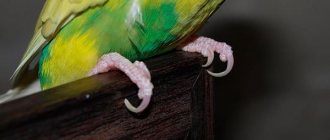
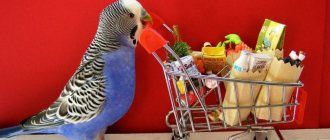
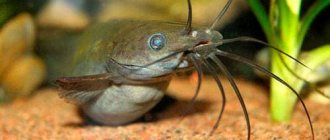
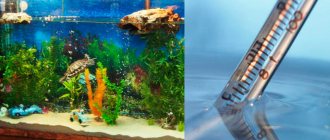
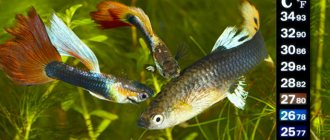
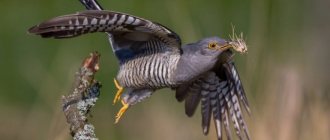
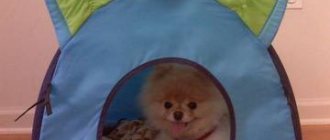
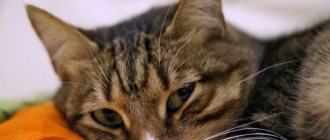

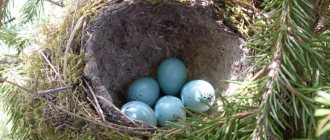
![Temperature in cats [normal, elevated, decreased]](https://zooservice-osetia.ru/wp-content/uploads/temperatura-u-koshek-normalnaya-povyshennaya-ponizhennaya-330x140.jpg)